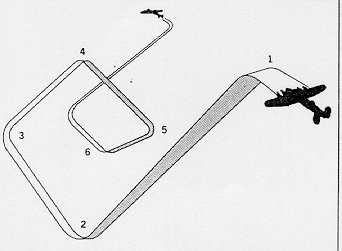maybe you should re-read your notes, due to the ease at which 110's were shot down over england they were not allowed to go unless accompanies by heavy escort, which later in the war was consired a waste of resources. lancs would not dive bomb because that would disrupt their formation, which was their main defense, also they flew at night, with no lights, which made it even worst. as for looping they had gunners, boxes of ammo, other crap and they would have been bouncing inside like a ball in a ping pong machine. mossies were best at low level (and I mean tree top) light bombers but were no match for the fiters in dogfites, not saying they didnt shoot a few fiters, but their best defense was to hit and run like hell before anybody knew they were there.
this was changed in 97 i believe which same as in ah now, gunners could not fire untill the plane was up in the air. before then I remember lots of times landing a b17 and end of runway and killing all uppers. kindda of like we do with tanks here.
semp
No offense, but your knowledge of World War II fighters, their abilities and tactics is terribly lacking.
At high altitudes, the Mosquito was virtually untouchable due to it's high speed and was probably one of the best night fighters during the war. The speed, maneuverability and ordnance load made it a perfect plane for low level attacks and not because of necessity because it "sucked" up high.
Bf 110s operated over England during BoB without fighter escort on numerous occasions. One of the most devestating strikes during the BoB was at the hand of a specialized Luftwaffe squadron that used NOE attack tactics flying Bf 110s. It was also faster than the contemporay RAF Hurricane but had poor acceleration. It was also a threat as a high altitude escort using BnZ attacks. It was able to loiter over England a lot longer than the Bf 109.
While Lancaster's didn't dive bomb, they did use shallow dive bombing tactics. Also, the Lancaster was capable of diving at steep angles, the recommended evasive tactic for Lancasters was a tight spiral dive called the 'Corkscrew'.
The RAF heavy bomber's standard evasive maneuver enabled it to continue on course while presenting an attacking fighter with an extremely difficult target. This maneuver is performed any time the attack is from the rear to middle of the craft. The diagram at Figure 1. shows the maneuver following a port fighter attack.

How to:
1. The pilot (originally cruising at 200-225 mph) opens his throttle and banks at 45 degrees to make a diving turn to port (because the enemy aircraft is on the port, reverse the maneuver if enemy is on starboard.); descending through 1,000 ft in six seconds, the bomber reaches a speed of nearly 300 mph. After the 1,000 ft descent, the pilot pulls the aircraft into a climb, still turning to port.
3. He reverse the turn, halfway through the climb which has caused his speed to fall sharply, possibly forcing the attacking night fighter to overshoot.
4. Regaining his original altitude, with speed down to 185 mph and still in the starboard turn, the pilot pushes the aircraft down into another dive.
5. Picking up speed in the dive, he descends through 500 ft before reversing the direction of the turn.
6. If the fighter is still on his tail, he stand by to repeat the maneuver. The physical effort required by the pilot has been compared with that of an oarsman pulling hard in a boat race.
The next question is what do we do with an attack from the front area since our turrets will not move left or right. If the attack is basically head on point the nose towards the enemy plane just like a fighter. Otherwise, use the corkscrew. It was rare that a Lancaster was attacked head on during night operations.
ack-ack